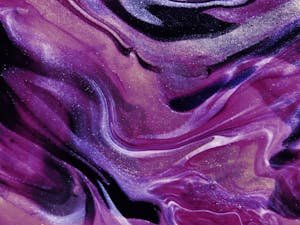
In the torrent of life’s trials and tribulations, there exists a hue that encompasses the essence of strength, resilience, and the unyielding spirit of human connection. “The Color Purple,” adapted anew in 2024, splashes onto screens with an emotional force that echoes the timeless narrative penned by Alice Walker.
Set against the backdrop of racial and gender oppression in the early 20th century South, “The Color Purple” immerses viewers in the vivid hues of suffering, redemption, and ultimately, triumph. Through the eyes of Celie, a young African American woman played with poignant grace in this rendition, we traverse the rocky terrain of her life, where each encounter leaves an indelible mark on the canvas of her existence.
The torrential downpour of adversity is palpable from the film’s opening frames. Celie’s journey unfolds like a tempest, with torrents of injustice and cruelty threatening to drown her tender spirit. Yet, amidst the darkness, there are flickers of light—moments of connection, of love, and of sisterhood—that illuminate the path to redemption.
One of the most striking aspects of this adaptation is its unflinching portrayal of the bonds that tie us together in the face of adversity. From the unwavering support of Celie’s sister, Nettie, to the unexpected kinship forged with the bold and resilient Shug Avery, each relationship serves as a lifeline in the turbulent waters of Celie’s life.
The color purple, a symbol of royalty, spirituality, and empowerment, permeates every frame of the film, infusing it with a sense of regality and resilience. It serves as a reminder that even in the darkest of times, there is beauty to be found, and that true strength lies in embracing one’s identity and reclaiming one’s voice.
As the story unfolds, we bear witness to Celie’s transformation from a meek and downtrodden figure into a beacon of strength and self-discovery. It is a testament to the human spirit’s capacity for resilience and reinvention, and a reminder that no matter how fierce the storm may rage, there is always a glimmer of hope on the horizon.
The performances in this adaptation are nothing short of breathtaking, with each actor imbuing their character with a depth and authenticity that resonates long after the credits roll. From the raw vulnerability of Celie to the fiery defiance of Sofia, every portrayal is infused with a palpable sense of emotion that cuts straight to the heart.
But perhaps the most powerful aspect of “The Color Purple” lies in its ability to spark conversations and provoke introspection long after the final curtain falls. It is a mirror held up to society, reflecting both the progress we’ve made and the distance we still have to travel on the journey toward equality and justice for all.
In the end, “The Color Purple” is more than just a film—it is a testament to the resilience of the human spirit, a celebration of the power of love and sisterhood, and a rallying cry for a brighter, more inclusive future. As the credits fade to black, we are left with a renewed sense of hope and a reminder that even in the darkest of times, the color purple still shines bright.
In the tapestry of life, amidst the myriad shades of joy and sorrow, love and loss, it is the color purple that stands out as a beacon of hope and resilience. And in this stirring adaptation, its brilliance shines brighter than ever before, illuminating the path to redemption and reminding us all of the power of the human spirit to triumph over adversity.




